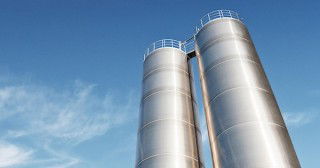In his paper ‘A new approach to burning alternative fuels’, delivered at the Cemtech Europe 2018 conference in Istanbul, Turkey, Oral Turesay of KHD Humboldt Wedag introduced the concept of ‘processing depth’. His thesis was that the greater the proportion of the thermal energy requirements to be provided by alternative fuels (AFs), the greater the investments for kiln modification are likely to be. That is certainly the case and has been borne out by many examples from the international cement industry.
Oral Turesay’s ‘process depth’ was provided by KHD’s Pyroclon CC (Combustion Chamber) and Pyrorotor for burning lumpy AFs with the Pyrorotor providing 10min residence time for the combustion of such lumpy AFs. His KHD colleagues, Dr Heiko Schürmann and Norbert Streit, talked about the same concept in ICR January 2018 under the title ‘Not simply calcining’. They described how calciners have to do much more than just achieve ~95 per cent calcination of the feed exiting the preheater to the rotary kiln. The vitiated gas from the kiln inhibits the combustion of the fuel meaning that KHD must design for a minimum of 3s residence time to achieve burn-out of the fuel. Normally the company designs for 3~4s for lignite, hard coal, natural gas and oil, and for anthracite or petcoke over 5s. The length of time required for complete burn-out of the fuel is dependent on the volatile content of the solid fuel. The situation is even worse for burning AFs with higher moisture content and particle size. In those cases more than 5.5s and turbulence are required to burn fuels of constantly-varying properties.
